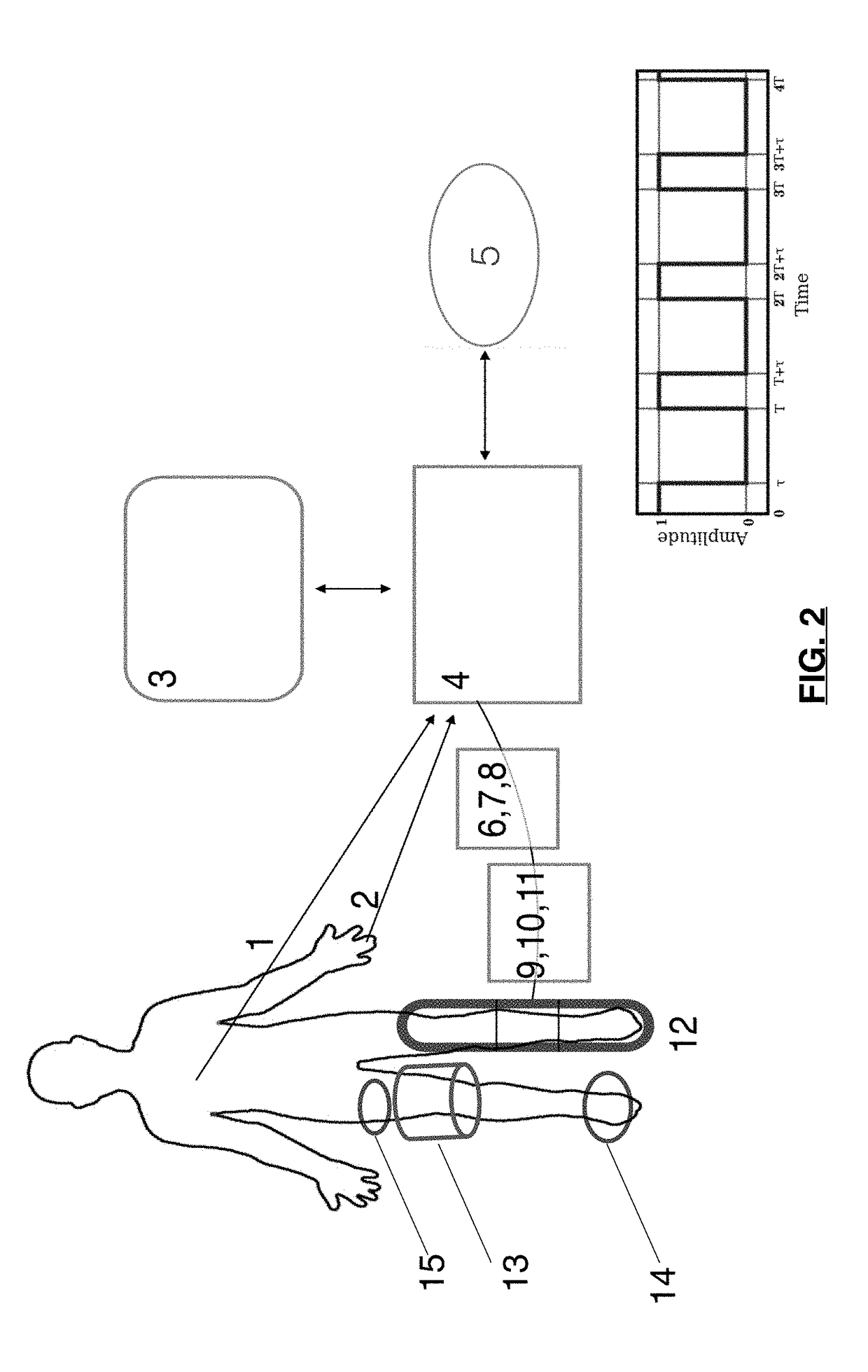Apparatus and method for promoting wound healing
a technology of apparatus and wounds, applied in the field of medical devices, can solve the problems of inability to deliver cardiosynchronized sequential or gradient compression, inability to transfer the effect of lowering pressure on the venous end of the capillary bed, and inherently very limited design mechanisms, so as to reduce tissue pressure, enhance normal arterial flow, and reduce the volume of venous and interstitial fluid of the limb.
- Summary
- Abstract
- Description
- Claims
- Application Information
AI Technical Summary
Benefits of technology
Problems solved by technology
Method used
Image
Examples
Embodiment Construction
[0095]Referring to FIG. 1 in more detail, there is shown a simplified block diagram of apparatus. Below is identification of the components in FIG. 1.[0096]1. EKG signal[0097]2. PPG signal[0098]3. User interface[0099]4. Computing system[0100]5. External database[0101]6. Air Compressor[0102]7. Air Reservoir[0103]8. Inflation valves[0104]9. Conduits[0105]10. Circuitry controlling inflation valves[0106]11. Conduits[0107]12. Inflation Air Cells
[0108]FIG. 1 depicts a simplified overall design of the sequential compression system. The system compresses a limb at specific time intervals determined by inputs to the system. Inputs to the system include the EKG (1) and photoplethysmograph (PPG) waveform (2). EKG leads are attached to the body to supply the heart's pulsatile electrical signal, the EKG. At the distal end of the limb where the blood flow increase is desired, a PPG monitor is attached to detect pulsatile blood flow in the underlying tissue. A series of inflatable air cells (12) a...
PUM
 Login to View More
Login to View More Abstract
Description
Claims
Application Information
 Login to View More
Login to View More - R&D
- Intellectual Property
- Life Sciences
- Materials
- Tech Scout
- Unparalleled Data Quality
- Higher Quality Content
- 60% Fewer Hallucinations
Browse by: Latest US Patents, China's latest patents, Technical Efficacy Thesaurus, Application Domain, Technology Topic, Popular Technical Reports.
© 2025 PatSnap. All rights reserved.Legal|Privacy policy|Modern Slavery Act Transparency Statement|Sitemap|About US| Contact US: help@patsnap.com



